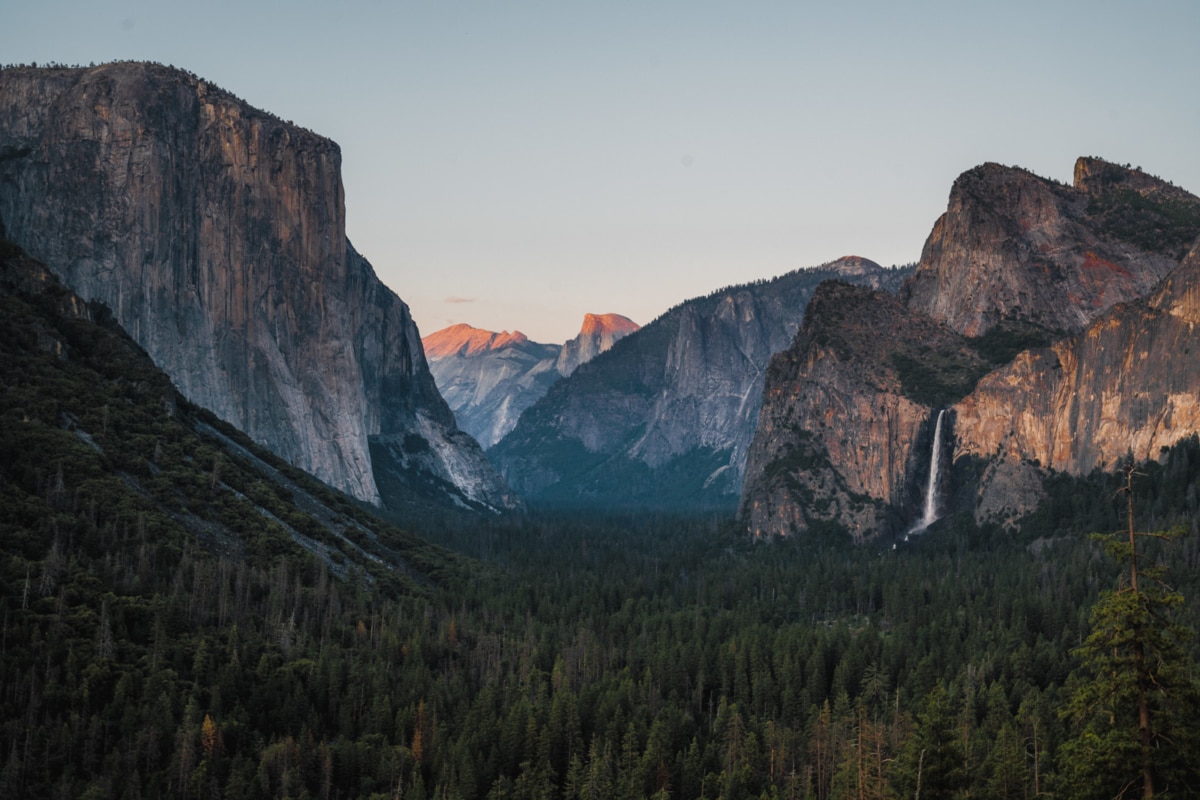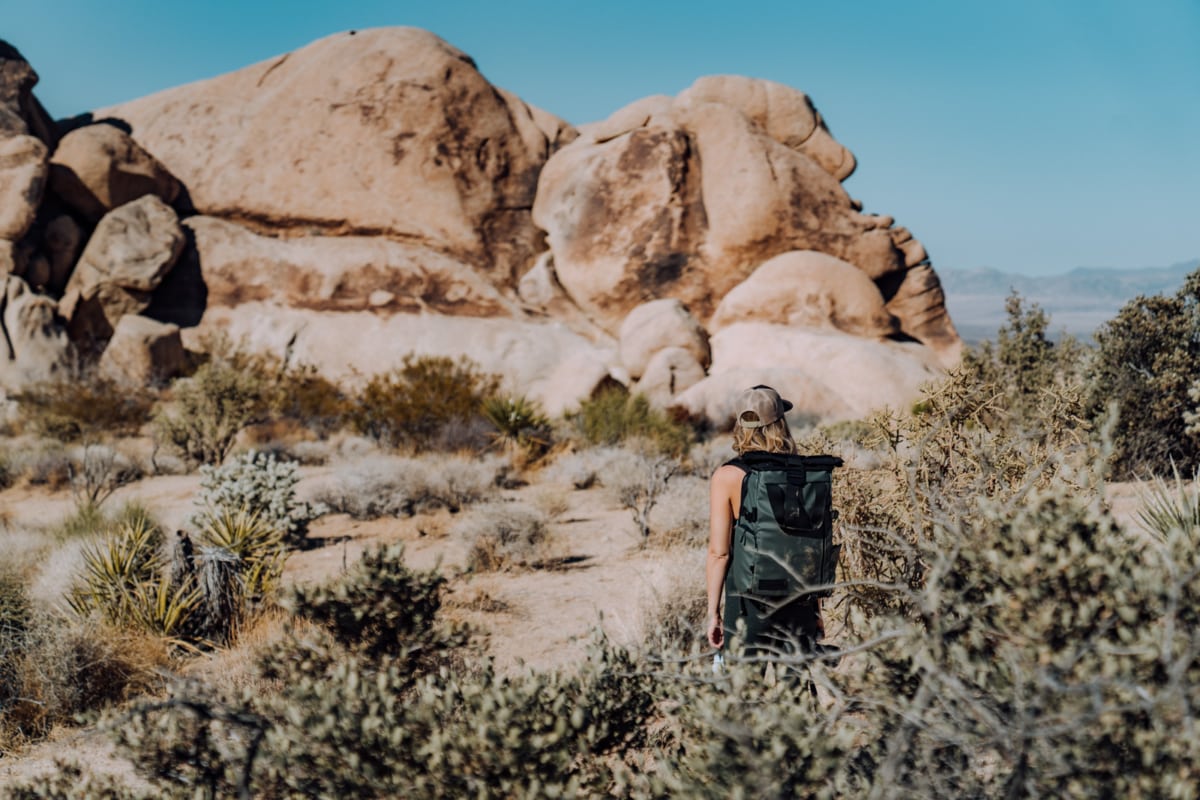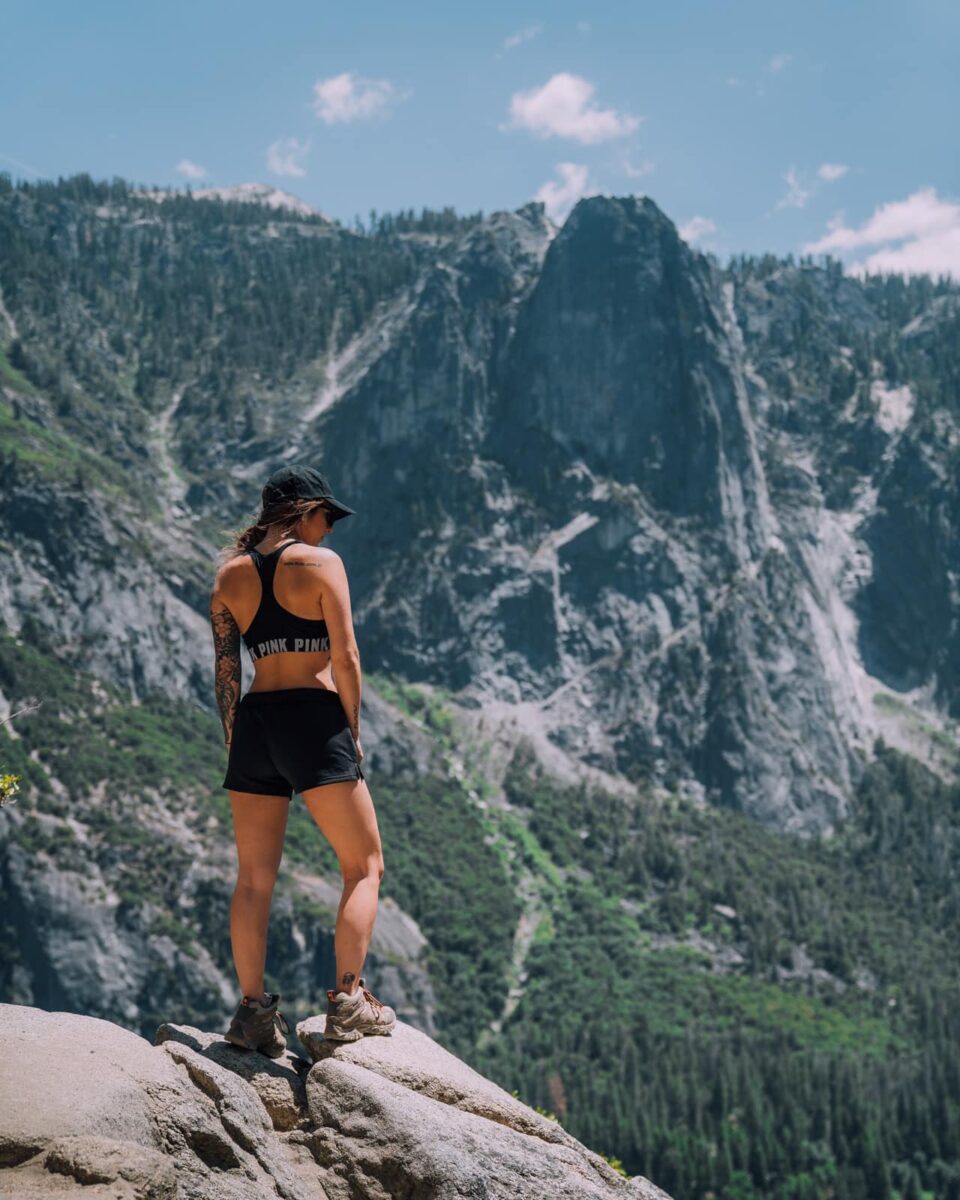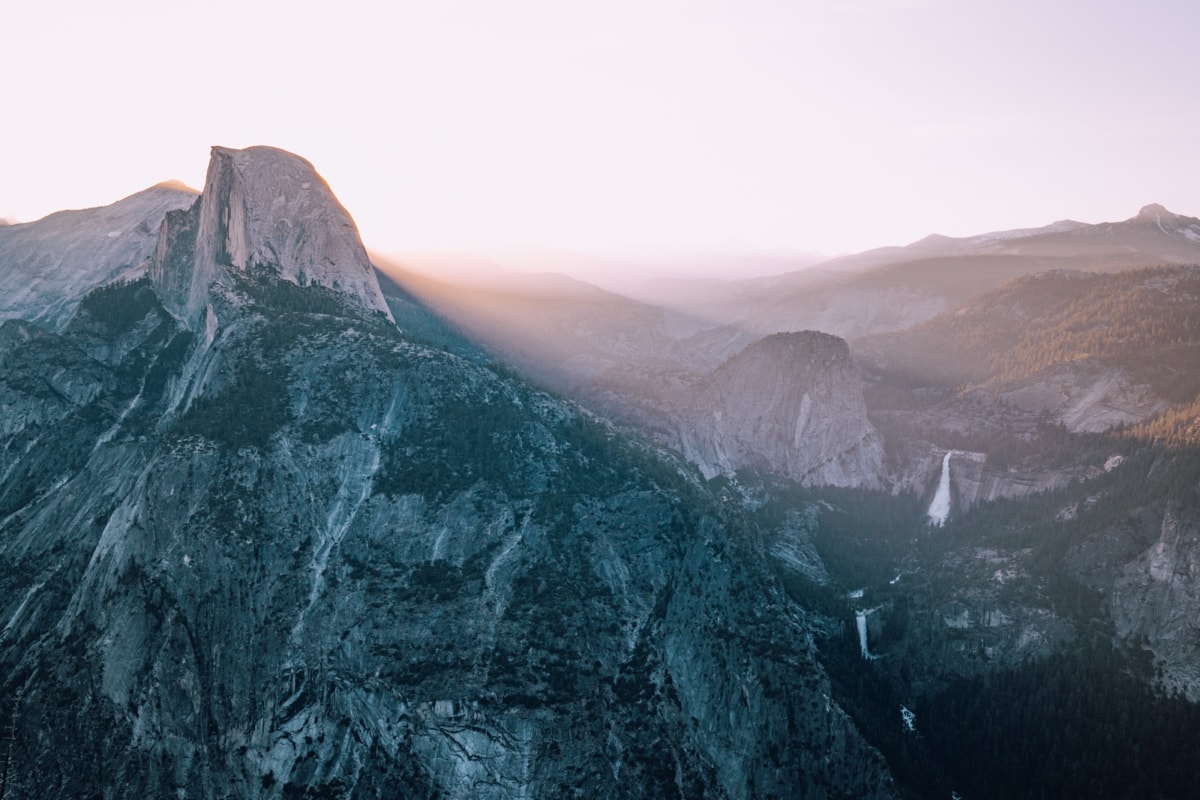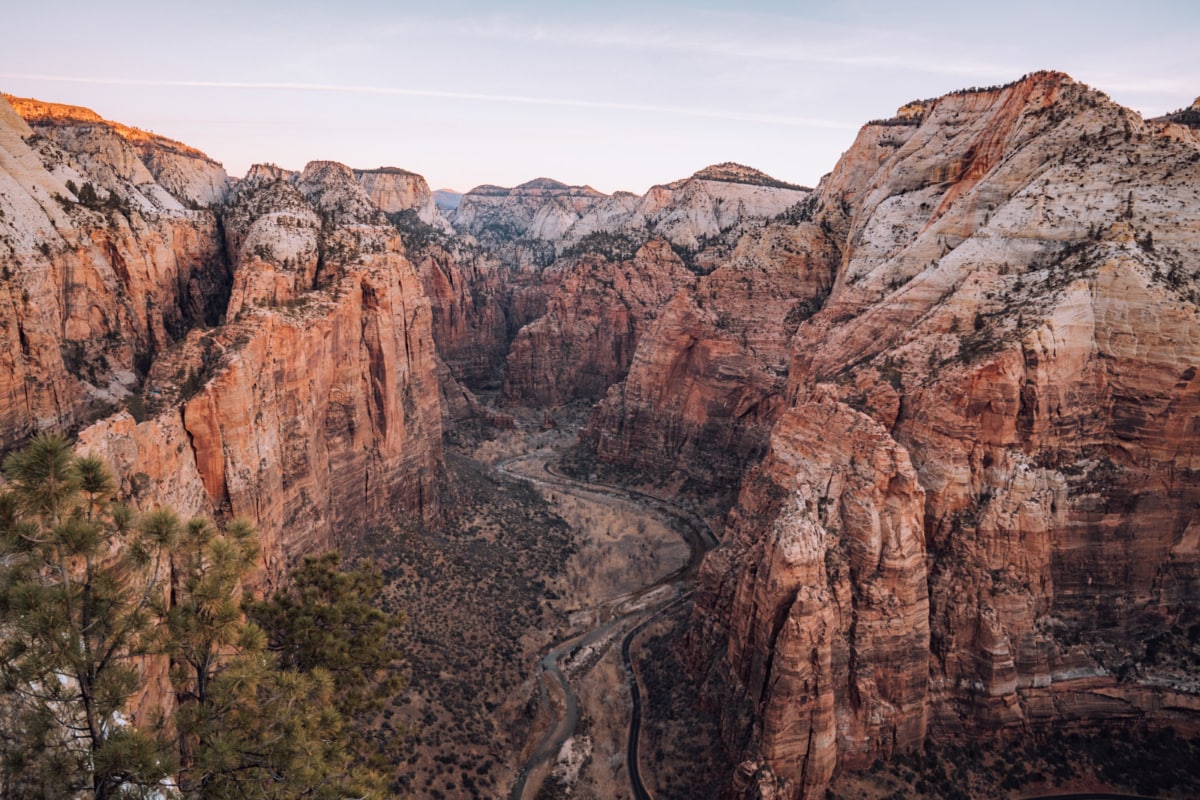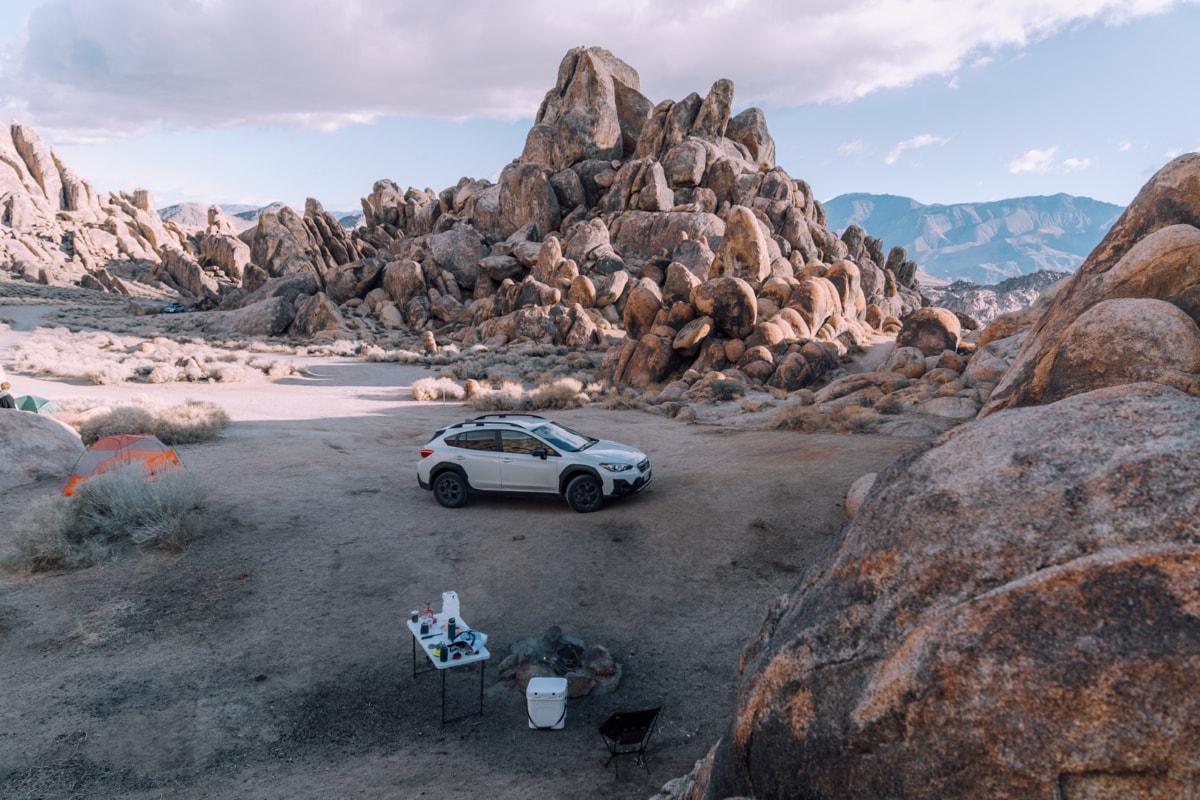The Leave No Trace principles are a set of guidelines to follow when spending time outdoors, in order to minimize our impact on the wilderness areas we visit. These are the seven principles and how to follow them!
The 7 Leave No Trace Principles (And How to Follow Them)
Outdoor recreation is rapidly growing as more people are exploring wilderness areas across the world. If you are lucky enough to enjoy the wonderful outdoors, it’s important to minimize your personal impact on the environment.
The Seven Leave No Trace Principles provide a framework of rules that can be applied in any outdoor setting. The rules are fairly easy to understand, however, they are not static. Many locations have different regulations and varying environments have unique needs.
Striving to follow the Leave No Trace seven principles will keep environments welcoming and beautiful for years to come.
What is Leave No Trace?
Leave No Trace is a practice of outdoor ethics intended to minimize the human impact on the environment when spending time in the wilderness. These ethics apply to all outdoor recreation.
The Leave No Trace Principles were founded by the Leave No Trace Center for Outdoor Ethics. As a non-profit organization, their mission is to work towards a sustainable future on the planet while keeping natural lands healthy and vibrant. Learning and following the seven principles of this framework is a way to reduce your impact in the outdoors.
Rather than looking at Leave No Trace as a set of rules, look at it as taking care of the places you enjoy! Cleaning up an area and respecting the environment you visit ensures that everyone will be able to find greater enjoyment in the outdoors.
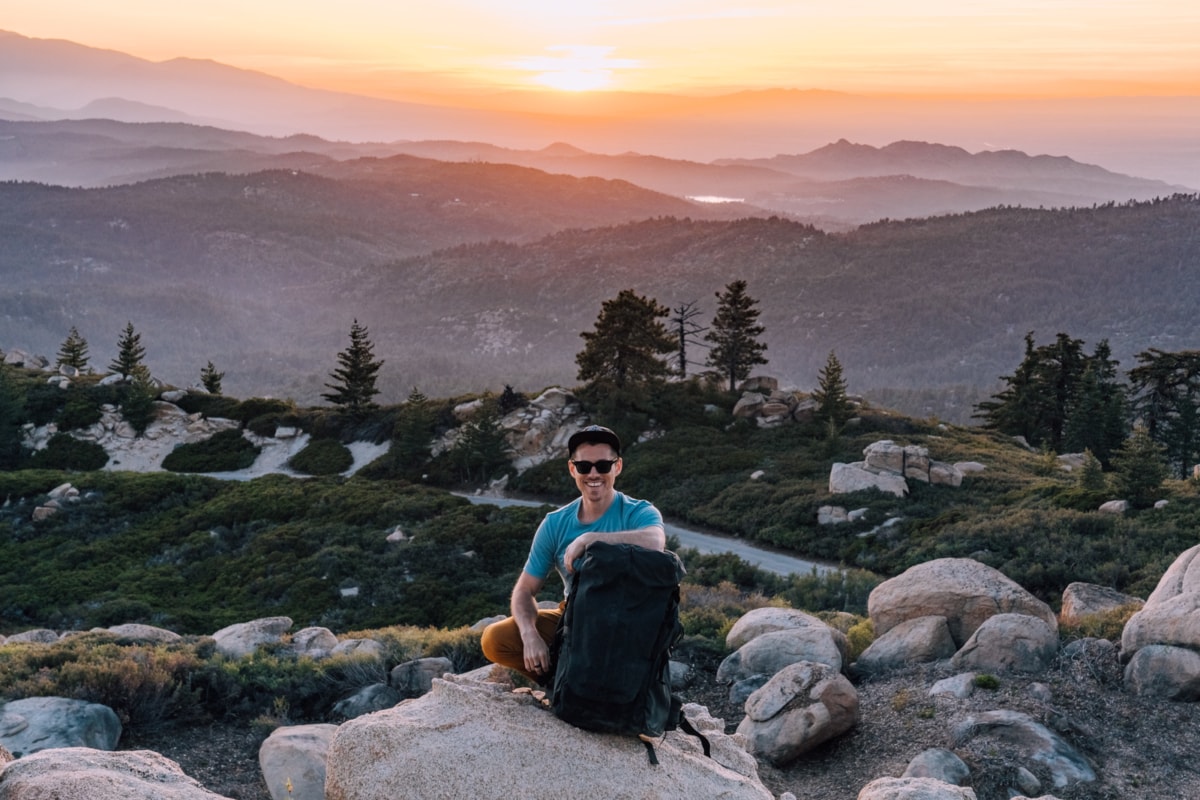
The Leave No Trace Seven Principles
The Leave No Trace seven principles, as outlined by the Leave No Trace Center for Outdoor Ethics, are a general set of guidelines for anyone spending time outdoors. Whether you are summiting a mountain, following a desert trail, or strolling through a local park, following these principles will benefit the wilderness area you are exploring for years to come.
I know that learning and understanding the principles of Leave No Trace can feel overwhelming at first. There is a lot to take in, and everybody is going to make mistakes—I certainly have!
At the end of the day, don’t let that stop you from enjoying the great outdoors. Do what you can to minimize impacts on the people and places you visit, and remember that this is a learning process, and one that can take some time.
-
Plan Ahead and Prepare

It’s important to plan ahead and prepare in order to maximize your safety. Most accidents that occur in the outdoors are easily preventable if proper precautions are taken and you have knowledge about what you’re doing.
When you’re out adventuring, it’s important to remember that there is always risk involved, and rarely—if ever—are you only putting yourself at risk. Risky decisions put your group at risk, other groups at risk, and even Search and Rescue teams if they are called to aid you.
So, do your research! Taking the time to plan ahead and prepare is the first of the seven principles of Leave No Trace because it occurs before you even make it to the site.
Best Practices
- Identify your group’s goals of the trip, however, expect that uncertainties may arise and changes may be necessary.
- Note the ability and skill level of your group.
- Find a detailed topographic map with information about the place.
- Wear proper clothing and shoes.
- Always pack layers. Weather can be unpredictable. Sometimes people get lost. Warmer clothes are essential for warmth and comfort.
- Will you be out late? Always pack a headlamp. Even if you don’t expect to be out late, things happen.
- Check the weather. Depending on the region, weather can vary drastically in a 24 hour period. Flash floods, afternoon thunderstorms, quick temperature changes. Check the weather before heading out and if the sky looks questionable, don’t put yourself at risk.
- Research the terrain and carry a topographic map of the places you will be visiting. Check maps for elevation profiles using apps like AllTrails. The steeper the terrain, the longer it will take to hike. Rockier terrain with boulders will also slow you down.
- Check local restrictions and regulations.
- Always bring more food than needed. This is a big one! You never know if someone will get lost or injured.
-
Travel and Camp on Durable Surfaces

Of the Leave No Trace seven principles, it is especially important to stay on the trail as much as possible. However, the Leave No Trace Center for Outdoor Ethics has varying rules depending on whether you’re visiting a well-trafficked area or a more remote area.
Trails and existing campsites were created to preserve commonly trafficked areas while protecting fragile vegetation. To properly follow the Leave No Trace seven principles, it’s best to travel and camp on durable surfaces when available.
Best Practices For Traveling on Trails
- Stay on trail—trails were created to prevent erosion and protect vegetation.
- Don’t cut switchbacks.
- If you must step off, look for a durable surface to stop.
Off Trail Travel
- This is common when looking for bathroom privacy or searching for a campsite.
- Avoid vegetation as much as possible. If unavoidable, choose areas with sparse vegetation or dry grasses that are more resistant.
- Avoid meadows and fragile vegetation as they quickly show trampling effects.
- Stick to durable surfaces like rock, sand, and gravel where repeated trampling has minimal impact.
- In the desert, don’t walk on cryptobiotic crust or off-trail soil.
- Avoid creating noticeable paths that others may follow.
- If you must travel through dense vegetation while in a group, spread out to reduce the appearance of the formation of new trails.
Camping In Highly Visited Places
- Choose campsites at least 200 feet from any trail or water source.
- Travel and camp on durable surfaces.
- Search for a campsite not easily visible to others.
- Obey camp regulations, ie. fire restrictions.
- Use pre-existing fire rings if building a fire.
- Avoid camping on high-impact sites that appear obviously warn down.
- Focus activity in areas with limited vegetation such as sandy areas or exposed bedrock.
- Leave the area clean.
Camping In Remote Areas
- In pristine areas, it’s best to only visit them if you are highly skilled in Leave No Trace principles according to the Leave No Trace Center for Outdoor Ethics.
- Aim to camp on durable surfaces.
- Minimize the number of times a site is trampled.
- Set up your kitchen and tents on durable sites.
- When walking around campsites, wear soft shoes.
- When in a group use alternative paths through vegetation.
- Avoid fires in these areas or try to especially minimize campfire impacts (build a mound fire).
- When leaving camp brush away footprints and cover them with natural materials.
- Strive to leave no trace of previous use.
-
Dispose of Waste Properly

The Leave No Trace Center for Outdoor Ethics urges visitors to consider the impacts of waste left behind. It is essential to dispose of waste properly because it ultimately affects other people, wildlife, and water sources. Of the seven principles of Leave No Trace, this one not only impacts the visual appearance in the short term but also leads to long-term pollution of an area.
How to Dispose of Food Waste
- “Pack it in, pack it out”.
- Pack out all food scraps and leftover food.
- Do not bury food scraps or leftover food because it takes a long time to decompose and is not natural to the site.
TIP: I use the Sea-to-Summit trash dry sack to carry any and all food waste, whether I’m hiking, camping or road-tripping.
How to Dispose of Human Waste
- For both liquid and solid human waste be sure to stay at least 200 feet from any water sources or trails.
- For solid waste, dig a hole 6-8 inches deep and 4-6 inches wide. After finishing, fully cover it with surrounding materials so you leave no trace behind.
- If bathroom facilities are available use them and try to keep them as clean as possible.
- In desert areas or at riverside locations, pack out human waste in a WAG bag.
How to Dispose of Toilet Paper
- Pack out all toilet paper in a plastic bag.
- If you have a safe fire you may burn it completely but be careful of fire regulations.
- Do not bury toilet paper. It takes a while to decompose and looks like trash if left behind.
- Only use plain, white, unscented brands.
Disposing of Other Trash
- If trash bins are available dispose of waste properly. If not, pack it out.
- If you notice other trash in the outdoors, do your part and pack it out!
Disposing of Water and Cleaning Waste
- Wash dishes and clean yourself 200 feet from any water.
- Minimize the use of soaps. Use hot water, scrub intensely, and if you must use soap, find natural, biodegradable soap.
- Wash away from camp if bears are a concern.
- Pack out all food contents in a plastic bag.
-
Leave What You Find

Photo: Jeremy Scott Foster Do your best to leave wilderness areas as untouched as you find them with both archaeological objects and natural objects including plants and rocks. The Leave No Trace Center for Outdoor Ethics notes that the removal of such objects is actually illegal in some locations!
Following all the Leave No Trace principles help that environment remain as original as possible allowing future visitors to enjoy the same places with minimal impact.
- Don’t pick flowers or plants. Take a photo instead.
- Don’t carve into trees or hang things with nails.
- Don’t alter or build additional rock cairns.
- Leave what you find including natural objects like petrified wood, antlers, and colored rocks in the backcountry. It’s illegal to remove any natural objects in national parks.
- Don’t dig trenches for tents or construct unnatural surfaces.
- When leaving return the area to its natural state to show minimal impact. Cover spots with twigs or pine needles to leave no trace.
- Follow the principle that good campsites are not made, they are found.
- In areas with public facilities, leave them as clean as possible.
-
Minimize Campfire Impacts

Sitting around a campfire in the evening is a wonderful way to kick back and relax after a long day, however, there are many factors to considers before building one. It’s actually quite difficult to leave no trace when constructing a fire, so a great alternative to a fire is a candle lantern or camp stove.
A dry environment, at risk of forest fires, may even have strict regulations prohibiting all campfires. It is especially important to adhere to these rules. According to the Leave No Trace Center for Outdoor Ethics, it’s best to limit the creation of fires, as it is hard to leave wilderness areas without site alterations and damage.
If You Have a Fire
- Use preexisting fire rings in well-placed campsites; far enough from water sources, the trail, and plants that could potentially burn or near rock outcrops where the fire may leave black scars.
- If a large fire ring exists in a common camping area be friendly and meet other people! Don’t make multiple fires in the same area.
- Always check backcountry fire bans and at private campgrounds check with land managers.
- Keep campfires small and in control.
- Never leave fires unattended.
- Using water put the fire out completely when finished; be sure to turn everything over to be sure it is completely out.
- Don’t throw any trash in fire rings (unless it will burn completely naturally like full paper products).
Mound Fires
Mound fires are the best type of fire to leave no trace because they minimize campfire impacts in the outdoors. They involve making a campfire from the soil in the area you are camping using just a trowel and a large stuff sack, ground cloth, or garbage bag.
Collect surrounding soil, gravel, or sand and lay it on top of the cloth at least 6-8 inches thick. The thicker, the better insulated the ground is from the heat of the fire. Make the circumference of the insulation larger than that of the fire.
Burn the fire in the center. The mound will keep scars from occurring on the ground or rocks. Later spread the cooled ashes and organic remains throughout the surrounding area so you leave no trace.
-
Respect Wildlife
Seeing wildlife in the wilderness is an exciting opportunity but it’s important to remember that you’re visiting their home. Most wildlife will mind their own business unless they feel threatened—which probably means you’re too close.
Here are some common principles of Leave No Trace in regards to wildlife.
Do Not Disturb Wildlife
- Give wildlife their space; observe at a distance.
- Wildlife often sees large groups as greater threats; divide into smaller groups if possible.
- Avoid quick movements and loud noises (unless trying to scare a bear that is too close).
- Never feed wildlife.
- Control pets around wildlife.
- Take special notice to mothers with their young. They also feel greater threats when humans are around.
- View wildlife from afar and back away if wildlife looks timid.
- Stay at least 300 feet from predatory wildlife like bears, moose, and wolves.
- Stay at least 100 feet from all other wildlife.
- Where water is scarce, like in deserts, avoid washing and bathing in limited water holes that wildlife drink from.
-
Be Considerate of Other Visitors
The last of the seven principles of Leave No Trace is to be considerate of other visitors. Courtesy to others is one of the most important of outdoor ethics. This way, everyone can feel welcome and enjoy their experience in wilderness areas. Many people travel to the outdoors to enjoy the peace and beauty of the area—not to hear your music.
Best Practices to Be Considerate of Other Visitors
- Follow general trail etiquette
- Keep noise to a minimum. Don’t blast music; use one earbud if listening to music.
- Limit technology use. When taking photos step off-trail onto durable surfaces.
- If drone use is permitted ask others if it’s ok to fly it.
- When hiking, yield to pack stock such as horses. When passing pack stock step off the trail on the downside.
- When hiking on trail yield to uphill hikers.
- Hike on the right of the trail, pass on the left.
- Larger groups should yield to individual hikers and smaller parties.
- Choose durable surfaces as rest areas.
- Avoid visiting during peak times such as on weekends or during the high season.
- Check rules about pets. Control pets and keep them on a leash at all times when required. Pick up all dog feces to leave no trace.
The Seven Principles of Leave No Trace provide a great framework and conservationist ethic for anyone who participates in outdoor recreation activities. Whether you’re backcountry hiking, staying in campsites, visiting public lands, or just relaxing in your backyard, minimizing your trace in the outdoors is a key way to reduce your impact on the environment.
Now get out there and explore!
